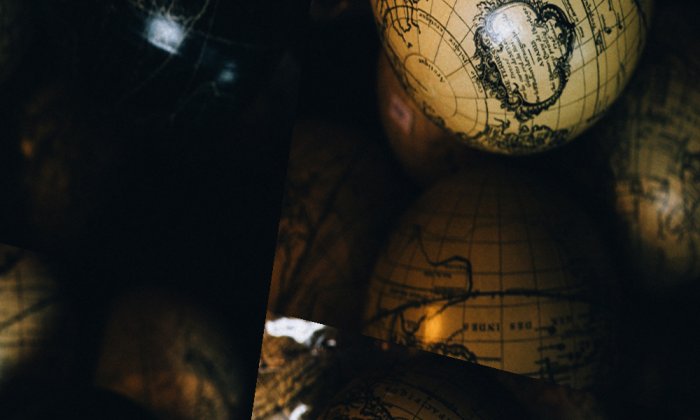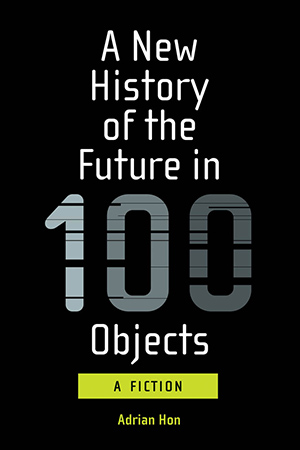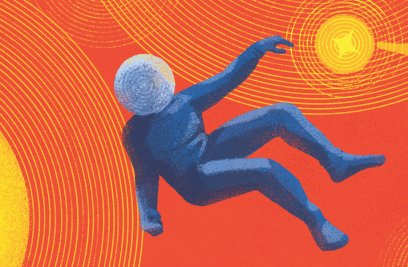Tianxia: Notes on an Imaginary Gameworld (2082)

In “A New History of the Future in 100 Objects,” game designer and author Adrian Hon constructs a possible future by imagining the things it might leave in its wake. Writing in the voice of a curator in the year 2082, the narrator looks back at the 21st century, offering a history of the era through a series of objects and artifacts, people and events, that transformed nearly every aspect of society. Many of these things are just an update or two away: improved ankle monitors, for example, and deliverbots. Others may be the logical conclusions of current trends — “downvote” networks that identify and erase undesirables, for example, and a system of universal basic income that values idleness and connection over labor. More benign are the concepts of Braid Collective, which provides financial support for artists, and rechartered cities, which invite immigrants to revitalize urban areas hollowed out by changing demographics. Throughout, the book provides a hopeful but clear-eyed vision of how we might negotiate and design our way into the future. In the excerpt that follows, our narrator from the future recalls Tianxia, one of the most sophisticated and detailed simulations ever presented to the public.
—The Editors
Shanghai, China, 2030
How far back in time would you like to go? To the Ice Age 150,000 years ago to warm the world by just a few degrees and help the hominids out? Or perhaps 65 million years, to nudge an asteroid’s path so it avoids Earth, preventing a mass extinction? How about 1.4 billion years, to fine-tune the balance of the planet’s atmosphere? Or 3 billion years, to alter the magma flows under the surface and reshape the continents? Or even further back, to change the atoms scattered by supernovae that eventually coalesced into our world?

I’m holding a virtual world in my hands, and I can alter it any way I please. This was Tianxia.
From 2032 to 2034, Tianxia, or “all under heaven,” was one of the most popular forms of entertainment in the world, attracting 400 million players and 2 billion viewers. For a while, it even consumed more than 6 percent of the world’s total processing power. Tianxia was simultaneously hailed as a revolution in our understanding of planetary science, geology, and evolution, and condemned as a distracting, insidious pseudoscience.
Tianxia was originally conceived as an academic investigation, free from controversy. In 2030, an amplified team at Shanghai Tech consisting of Professor Ernest Han, three graduate students, and seven expert systems was analyzing data from the Zheng He Orbital Telescope. The team wanted to understand how a set of 65 Earth-like planets had formed and whether they might harbor any life. Their chosen strategy was simple: “rewind time” by a few billion years and then simulate the physical and chemical processes that the planets would have undergone. To reduce the near-infinite set of simulations required to a more manageable number, Professor Han’s team planned to enlist amateurs on the Zooniverse network to manipulate the simulations as they progressed, regularly winnowing out obviously “lifeless” planets.
While Professor Han’s team had created one of the most sophisticated and detailed simulations ever presented to the public, amateurs stayed away; the software was just too difficult to use. But when an enterprising fan forked the code, grafted on more explicit game mechanics and a dramatically upgraded graphics engine, and renamed it “Tianxia,” interest exploded.
To understand the importance of Tianxia, I spoke to Estelle Egan, simulation historian:
It may seem like a crude toy to us today, but in the ’30s, Tianxia offered players the chance to create their own miniature worlds that could be rendered and examined in astonishing detail, all the way from orbit down to rivers, trees, and animals. It was perhaps the first game to fully deliver on the extravagant promise of earlier games such as Spore and Worldcraft, a promise of complete control over a living, breathing, and highly complex world.
Unlike those previous games, players usually didn’t micromanage their creations in Tianxia. Most preferred to set the initial starting conditions of their world and then sit back and watch the simulation unfold, only occasionally interfering to guide the path of an errant asteroid or prevent an ice age from killing off a favorite species. The best Tianxia players attracted followers (and money) based on the “interestingness” of the worlds they nursed. For example, a barren, unchanging rock was far less popular than one with a functioning and stable ecosystem.
Successive patches to Tianxia saw extra detail added to the geological and environmental systems, with perhaps the most popular being the “agent” simulation introduced in 2033, allowing the creation of basic societies within the game. Run a Tianxia simulation long enough and your world might end up going to war with itself, or become so advanced they could run their own primitive simulations.
Other patches included unusual and fantastical styles of planets such as ringworlds, orbitals, Dyson spheres, and tweaks to the speed of light or gravity. However, most players tended to stay closer to Earth-like planets in their games, enthralled in the richness and complexity of the worlds created by themselves and their friends. Thousands of players made good money selling beautiful custom Tianxia worlds through branching and remixing. Needless to say, by this point Tianxia had strayed far from its original academic goals, and its original creator, Professor Han, refused to even acknowledge the existence of the game.
Why was Tianxia so popular and so engrossing, and how did it manage to stand out from the seemingly endless array of live-action role-playing games that had dominated entertainment for the previous few years? Egan provides some insight:
Tianxia was the right game for the right time. Humanity was beginning to grasp the depth and meaning of its mastery over nature. We were on the cusp of world-changing geoengineering projects we thought would fix the oceans and atmosphere, and we gazed upon thousands of worlds across the galaxy, thinking we could capture their past and future. We felt we understood the world because we could simulate it and visualize it and model it.
But in truth, those simulations didn’t reflect reality, not at the scale they were reaching for. They only reflected our hubris. We realized that soon enough.
Yet for a brief moment before that calamity, the world relaxed. Four hundred million people recalled the words, “in the beginning,” and they created their own heaven and earth.
Adrian Hon is CEO and founder of the London-based game design company Six to Start. He is the author of “You’ve Been Played: How Corporations, Governments, and Schools Use Games to Control Us All” (Basic Books, 2022) and “A New History of the Future in 100 Objects,” from which this article is excerpted.




